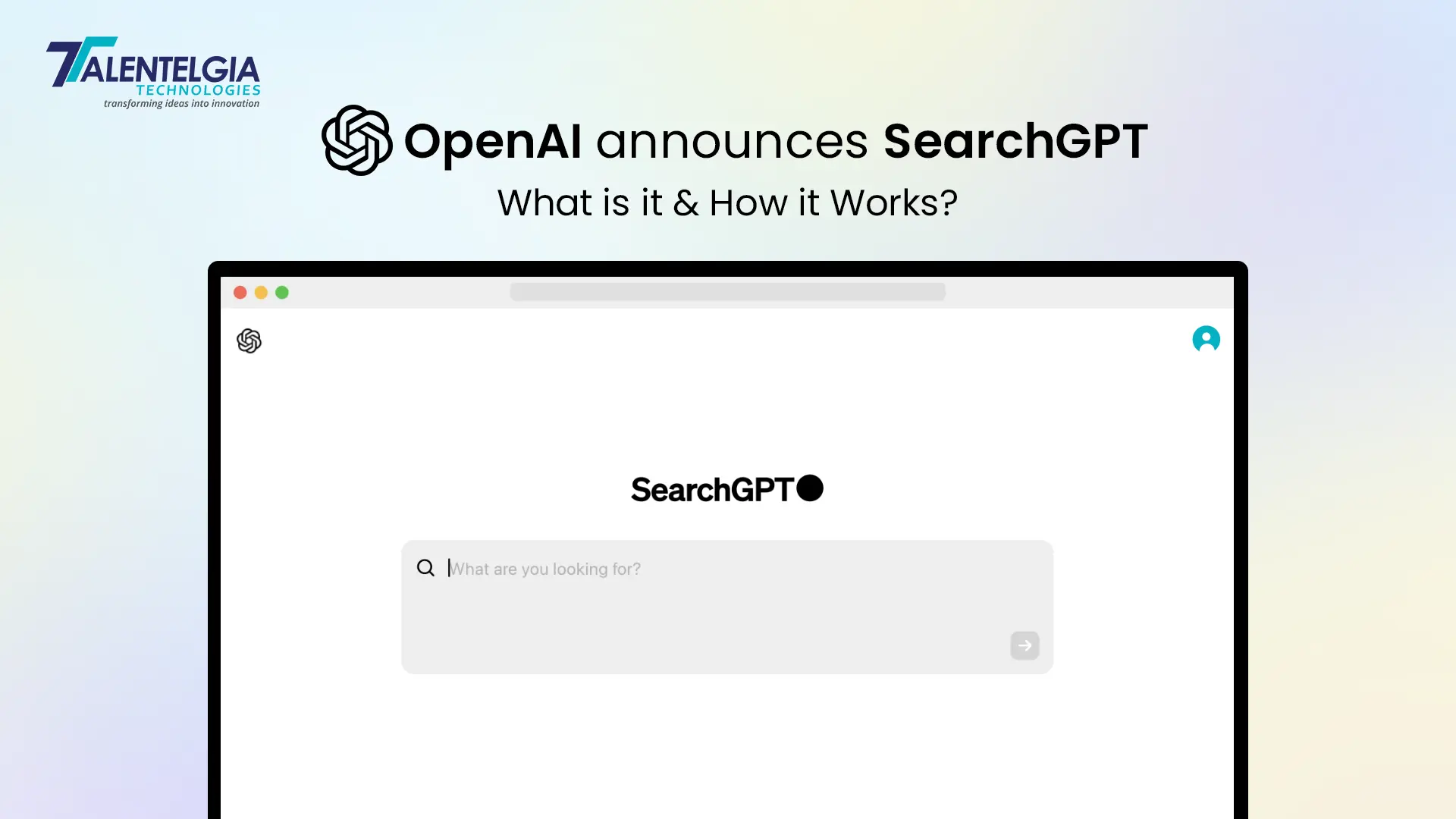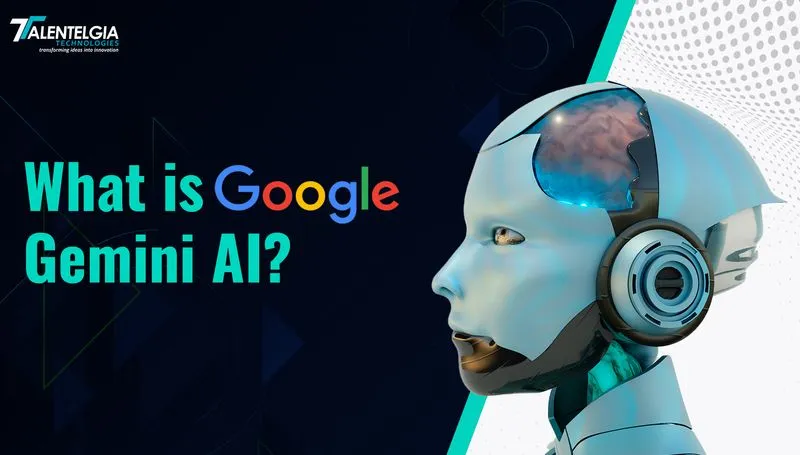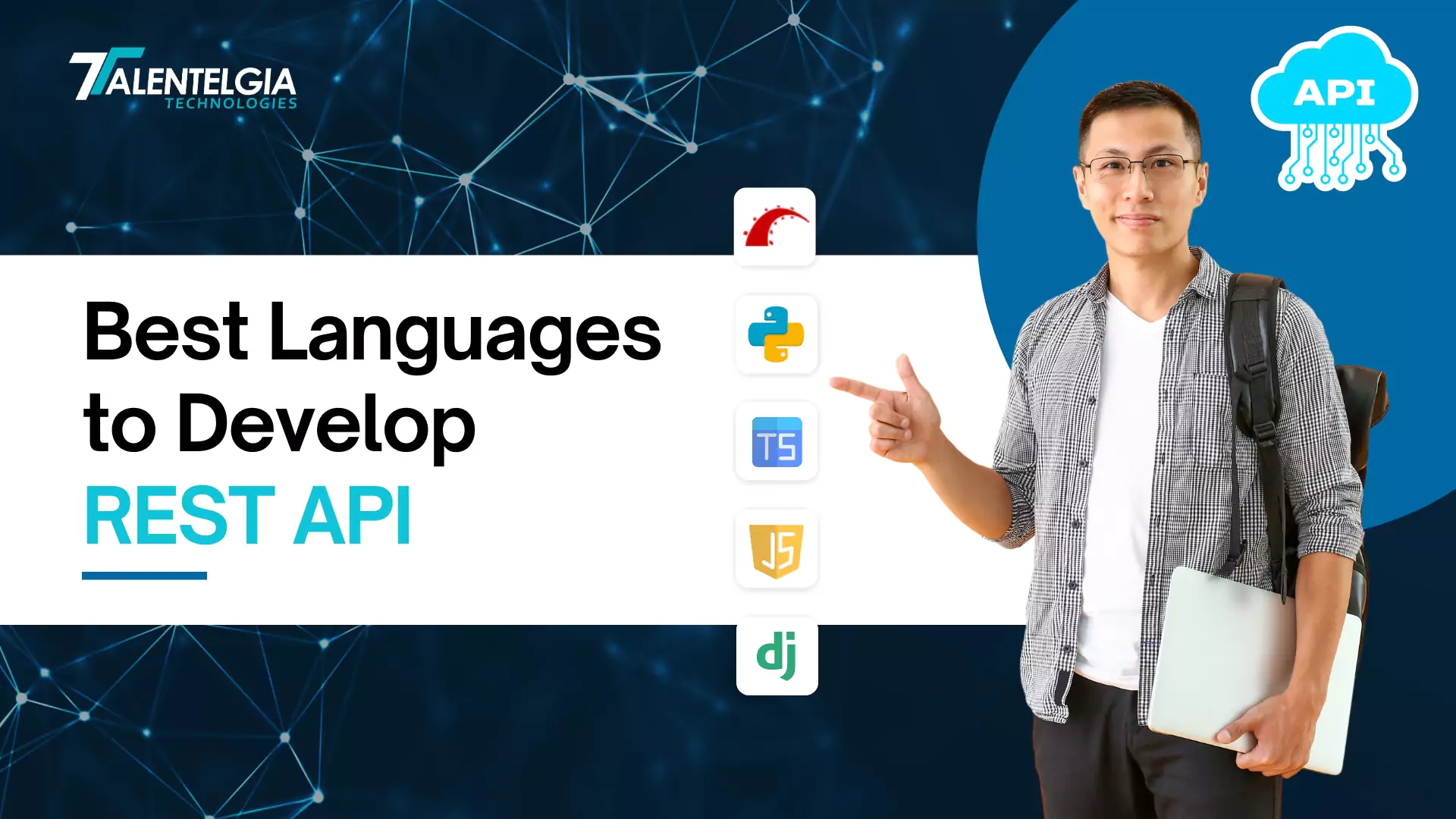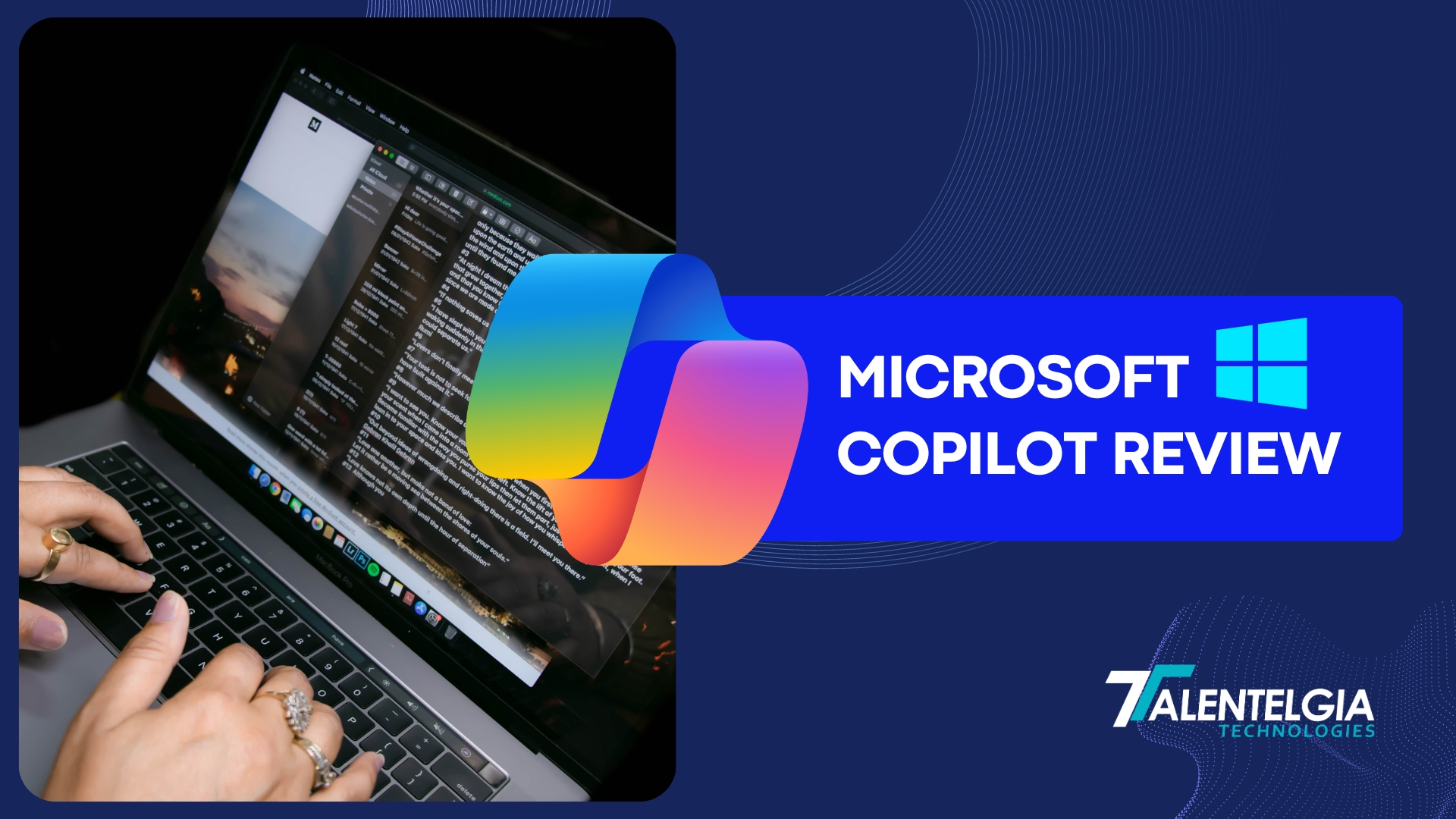Emphasizes the importance of building AI search with respect for journalism and publishers. –Nicholas Thompson, The Atlantic
OpenAI is entering the search engine market with its new product, SearchGPT. It’s not a search tool it’s a search engine that aims to change the way we view information online. SearchGPT is dedicated to providing clear answers with content backed by trusted sources, using simple, modern language.
OpenAI’s strategic move challenges Google’s long-standing dominance. SearchGPT aims to appeal to users who are tired of traditional search methods by offering them a more comprehensive search experience.
SearchGPT is designed to help users connect with publishers by prominently citing and linking to them in searches. Responses that SearchGPT generates have clear attribution and links. This informs users where the information is from, and they can quickly engage with even more results in a sidebar with source links.
Quick Facts :
- Introduction of SearchGPT: A temporary prototype by OpenAI to test new AI search features.
- Goal: Combine AI model strength with web information for timely, accurate answers with clear sources.
- Enhanced Search: Aims to make finding information faster and easier
- Direct Answers: Provides quick, up-to-date answers with clear, linked sources.
- Conversational Interaction: Allows follow-up questions with shared context building.
- Ecosystem Support: Aims to support publishers and creators by highlighting high-quality content
- User and Publisher Feedback: Ongoing feedback will shape future iterations and integration into ChatGPT.
- Invitation to Join: Interested users can sign up for the waitlist to try SearchGPT.
SearchGPT Features
OpenAI’s SearchGPT takes a decidedly different approach to search by prioritising collaboration with news publishers. Unlike its competitors, OpenAI has engaged with major news outlets to refine Search GPs capabilities. This strategic partnership aims to address long-standing concerns about content ownership and accuracy that have plagued the AI search landscape. SearchGPT is changing the way we interact with the web.
Conversational Search Experience
By letting users ask questions in a natural language format, the prototype mimics human interaction. In response, it delivers concise answers supported by reliable sources, eliminating the need for complex search queries.
A Thriving Ecosystem for Creators
OpenAI is committed to encouraging an innovative digital ecosystem. The search prototype highlights high-quality content from publishers and creators, driving traffic to their websites. This mutually beneficial approach empowers both users and content producers.
Transparency and control
Transparency and user trust are fundamental principles guiding the development of the prototype. Users are provided with clear information about the sources of their search results. Additionally, the company offers publishers tools to manage their content’s visibility within the search platform.
Publisher control and transparency
A key aspect of OpenAI’s strategy is granting publishers control over how their content appears in search results. While they can opt out of having their content used to train OpenAI’s models, they can still maintain a visible presence.
SearchGPT emphasizes transparency by providing clear attribution and direct links to original sources. This commitment builds trust with users and reinforces the value of quality journalism.
The Future of Search with SearchGPT
This prototype represents a significant step forward in search technology. The company plans to refine the tool based on user and publisher feedback, with the ultimate goal of integrating its best features into the core search platform.
How SearchGPT Works
SearchGPT is designed for a more conversational and information-rich search compared with traditional search engines. This can be explained in simple terms as follows.
- Query Input: Just like you do in traditional search engines, you enter a query or question into SearchGPT.
- Gather Information: SearchGPT accesses and processes information from various online sources, comprising websites, documents, and databases.
- AI Processing: The AI model processes the query and the information it has gathered to understand the intention of the user.
- Response Generation: SearchGPT generates a response based on this understanding, usually in the form of summaries of relevant information with links to the sources.
- Learning Continuously: SearchGPT learns and improves over time. SearchGPT would look at user interactions and feedback to fine-tune its responses.
Do you know?
Alphabet shares fell more than 3%.
Who Can Access SearchGPT?
SearchGPT highlights the need for AI search to rely on high-quality, reliable information from trusted sources. – Robert Thomson, News Corp.
OpenAI’s search tool, SearchGPT, is finally here. But it’s a limited trial available to a select group of 10,000 users for now. SearchGPT is based on the standard GPT-4 language and forms the core of OpenAI. This restricted access allows the company to refine the search engine’s capabilities before a wider release.
Experts speculate that SearchGPT will eventually be made available to a broader audience. However, the specific timeline for this expansion remains uncertain.
The company is taking a unique approach to building its search results. Rather than solely relying on traditional web indexing, OpenAI is directly partnering with content creators and utilizing their content feeds. This strategy suggests a more curated search experience.
OpenAI has hinted at a larger plan. The company aims to integrate SearchGPT’s capabilities directly into ChatGPT, creating a supercharged AI assistant that can both hold conversations and conduct comprehensive searches. This AI integration could redefine how we interact with technology.
SearchGPT vs. Traditional Search Engines
Our way of accessing data is changing. For many years, Google has been a leader by providing a standard for accessing content and getting links to lists. But that tradition is being challenged by new research led by AI-driven platforms like OpenAI’s SearchGPT and new search engines. Here are some of the pros and cons of each platform to help you decide which search engine best suits your needs.
| Feature | SearchGPT | Traditional Search Engines |
| Interface | Conversational, natural language | Keyword-based, query box |
| Results Format | Direct answers, summaries, and links | List of links |
| Information Processing | Understands context and intent | Matches keywords with web pages |
| User Interaction | Allows for follow-up questions, clarification | Requires new search for each query |
| Source Attribution | Clearly indicates sources of information | Often requires clicking through links to find sources |
| Focus | Providing direct answers and relevant information | Displaying a list of potential matches |
SearchGPT: Challenges and Opportunities
Despite these positive strides, OpenAI faces significant challenges. It will always be a balancing act between the need for revenue and the public’s wants for a free service, and continual improvement will have to be incumbent upon the accuracy and reliability of research. OpenAI raises the bar with industry standards in openness, collaboration, and user experience. As technology continues to evolve in all directions, SearchGPT is going to have deep implications for how we find and make use of information.
Conclusion
SearchGPT is the turning point for search engines. It is a bold step away from the traditional ways of searching and is much more conversational and informative. Though currently available to a small audience, its potential to reshape how we find information cannot be undervalued.
What sets SearchGPT apart from search engines like Google is its focus on direct answers and contextual understanding. Keep in mind that this is an AI still in development.
The future of search is undeniably exciting. With the fast-paced advancement in AI technology, we may look forward to even more innovative search platforms. One way or another, it seeks to offer search engines that understand our needs and deliver information efficiently, relevantly, and satisfyingly.
SearchGPT is a cutting-edge first step toward that.


 Healthcare App Development Services
Healthcare App Development Services
 Real Estate Web Development Services
Real Estate Web Development Services
 E-Commerce App Development Services
E-Commerce App Development Services E-Commerce Web Development Services
E-Commerce Web Development Services Blockchain E-commerce Development Company
Blockchain E-commerce Development Company
 Fintech App Development Services
Fintech App Development Services Fintech Web Development
Fintech Web Development Blockchain Fintech Development Company
Blockchain Fintech Development Company
 E-Learning App Development Services
E-Learning App Development Services
 Restaurant App Development Company
Restaurant App Development Company
 Mobile Game Development Company
Mobile Game Development Company
 Travel App Development Company
Travel App Development Company
 Automotive Web Design
Automotive Web Design
 AI Traffic Management System
AI Traffic Management System
 AI Inventory Management Software
AI Inventory Management Software
 AI Software Development
AI Software Development  AI Development Company
AI Development Company  AI App Development Services
AI App Development Services  ChatGPT integration services
ChatGPT integration services  AI Integration Services
AI Integration Services  Generative AI Development Services
Generative AI Development Services  Natural Language Processing Company
Natural Language Processing Company Machine Learning Development
Machine Learning Development  Machine learning consulting services
Machine learning consulting services  Blockchain Development
Blockchain Development  Blockchain Software Development
Blockchain Software Development  Smart Contract Development Company
Smart Contract Development Company  NFT Marketplace Development Services
NFT Marketplace Development Services  Asset Tokenization Company
Asset Tokenization Company DeFi Wallet Development Company
DeFi Wallet Development Company Mobile App Development
Mobile App Development  IOS App Development
IOS App Development  Android App Development
Android App Development  Cross-Platform App Development
Cross-Platform App Development  Augmented Reality (AR) App Development
Augmented Reality (AR) App Development  Virtual Reality (VR) App Development
Virtual Reality (VR) App Development  Web App Development
Web App Development  SaaS App Development
SaaS App Development Flutter
Flutter  React Native
React Native  Swift (IOS)
Swift (IOS)  Kotlin (Android)
Kotlin (Android)  Mean Stack Development
Mean Stack Development  AngularJS Development
AngularJS Development  MongoDB Development
MongoDB Development  Nodejs Development
Nodejs Development  Database Development
Database Development Ruby on Rails Development
Ruby on Rails Development Expressjs Development
Expressjs Development  Full Stack Development
Full Stack Development  Web Development Services
Web Development Services  Laravel Development
Laravel Development  LAMP Development
LAMP Development  Custom PHP Development
Custom PHP Development  .Net Development
.Net Development  User Experience Design Services
User Experience Design Services  User Interface Design Services
User Interface Design Services  Automated Testing
Automated Testing  Manual Testing
Manual Testing  Digital Marketing Services
Digital Marketing Services 
 Ride-Sharing And Taxi Services
Ride-Sharing And Taxi Services Food Delivery Services
Food Delivery Services Grocery Delivery Services
Grocery Delivery Services Transportation And Logistics
Transportation And Logistics Car Wash App
Car Wash App Home Services App
Home Services App ERP Development Services
ERP Development Services CMS Development Services
CMS Development Services LMS Development
LMS Development CRM Development
CRM Development DevOps Development Services
DevOps Development Services AI Business Solutions
AI Business Solutions AI Cloud Solutions
AI Cloud Solutions AI Chatbot Development
AI Chatbot Development API Development
API Development Blockchain Product Development
Blockchain Product Development Cryptocurrency Wallet Development
Cryptocurrency Wallet Development About Talentelgia
About Talentelgia  Our Team
Our Team  Our Culture
Our Culture 
 Healthcare App Development Services
Healthcare App Development Services Real Estate Web Development Services
Real Estate Web Development Services E-Commerce App Development Services
E-Commerce App Development Services E-Commerce Web Development Services
E-Commerce Web Development Services Blockchain E-commerce
Development Company
Blockchain E-commerce
Development Company Fintech App Development Services
Fintech App Development Services Finance Web Development
Finance Web Development Blockchain Fintech
Development Company
Blockchain Fintech
Development Company E-Learning App Development Services
E-Learning App Development Services Restaurant App Development Company
Restaurant App Development Company Mobile Game Development Company
Mobile Game Development Company Travel App Development Company
Travel App Development Company Automotive Web Design
Automotive Web Design AI Traffic Management System
AI Traffic Management System AI Inventory Management Software
AI Inventory Management Software AI Software Development
AI Software Development AI Development Company
AI Development Company ChatGPT integration services
ChatGPT integration services AI Integration Services
AI Integration Services Machine Learning Development
Machine Learning Development Machine learning consulting services
Machine learning consulting services Blockchain Development
Blockchain Development Blockchain Software Development
Blockchain Software Development Smart contract development company
Smart contract development company NFT marketplace development services
NFT marketplace development services IOS App Development
IOS App Development Android App Development
Android App Development Cross-Platform App Development
Cross-Platform App Development Augmented Reality (AR) App
Development
Augmented Reality (AR) App
Development Virtual Reality (VR) App Development
Virtual Reality (VR) App Development Web App Development
Web App Development Flutter
Flutter React
Native
React
Native Swift
(IOS)
Swift
(IOS) Kotlin (Android)
Kotlin (Android) MEAN Stack Development
MEAN Stack Development AngularJS Development
AngularJS Development MongoDB Development
MongoDB Development Nodejs Development
Nodejs Development Database development services
Database development services Ruby on Rails Development services
Ruby on Rails Development services Expressjs Development
Expressjs Development Full Stack Development
Full Stack Development Web Development Services
Web Development Services Laravel Development
Laravel Development LAMP
Development
LAMP
Development Custom PHP Development
Custom PHP Development User Experience Design Services
User Experience Design Services User Interface Design Services
User Interface Design Services Automated Testing
Automated Testing Manual
Testing
Manual
Testing About Talentelgia
About Talentelgia Our Team
Our Team Our Culture
Our Culture

















 Write us on:
Write us on:  Business queries:
Business queries:  HR:
HR: 




